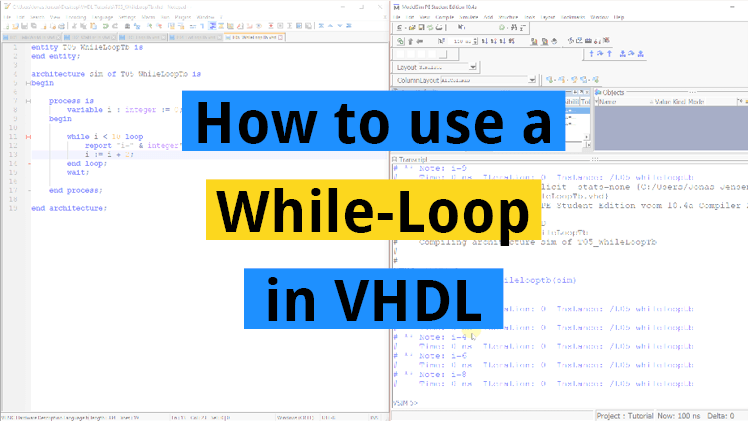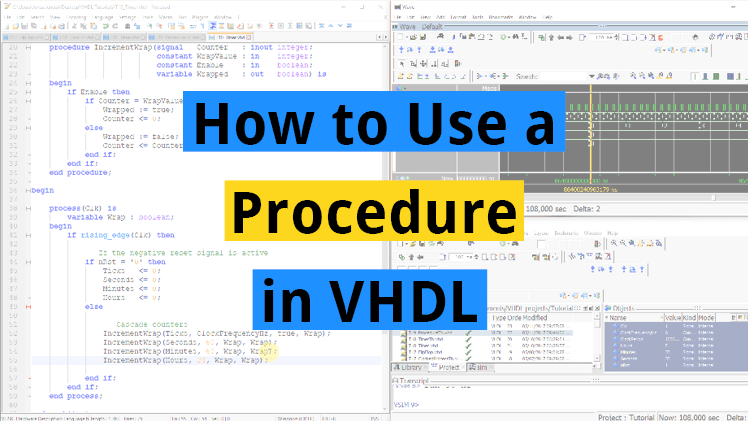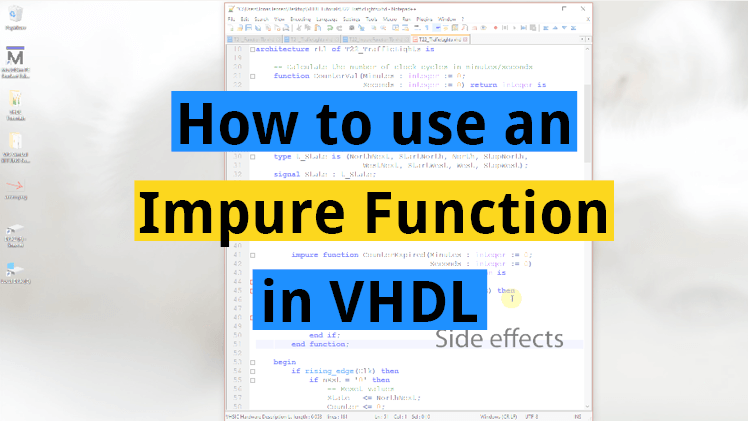I’m from Norway, but I live in Bangkok, Thailand. Before I started VHDLwhiz, I worked as an FPGA engineer in the defense industry. I earned my master’s degree in informatics at the University of Oslo.
Similar Posts

How to use a While loop in VHDL
In the previous tutorial, we learned how to use a For-Loop to iterate over an integer range. But what if we want a more detailed control of the loop than just a fixed integer range? We can use a While-Loop for this. The While-Loop will continue to iterate over the enclosed code as long as…

How to use a procedure in VHDL
A procedure is a type of subprogram in VHDL which can help us avoid repeating code. Sometimes the need arises to perform identical operations several places throughout the design. While creating a module might be overkill for minor operations, a procedure is often what you want. Procedures can be declared within any declarative region. The…

An Introduction to FPGAs & Programmable Logic
This video is an introductory presentation about FPGA and programmable logic technology. I delivered this 45 minutes talk at an event hosted by 7 Peaks Software in Bangkok, Thailand, on November 19th, 2019.

How to use an impure function in VHDL
An impure function can read or write any signal within its scope, also those that are not on the parameter list. We say that the function has side effects. What we mean by “side effects” is that it is not guaranteed that the function will return the same value every time it is called with…

How to use Wait On and Wait Until in VHDL
In the previous tutorial we learned the main differences between signals and variables. We learned that signals have a broader scope than variables, which are only accessible within one process. So how can we use signals for communication between several processes? We have already learned to use wait; to wait infinitely, and wait for to…

How to create a clocked process in VHDL
The vast majority of VHDL designs uses clocked logic, also known as synchronous logic or sequential logic. A clocked process is triggered only by a master clock signal, not when any of the other input signals change. The basic building block of clocked logic is a component called the flip-flop. There are different variants of…

First of all, thank you so very much!
These are by far the most comprehensible tutorials I have come across like ever!
Brilliant work.
So here my two cents out of gratitude:
Basic VHDL Quiz – part 4
Which statement is not true?
Answer 3 : The return statement cannot be omitted.
-> Correct
So the return statement CAN be omitted???
“Unlike in most other programming languages, the return keyword is mandatory in functions in VHDL.”
Confused by double negation. Me or you 😉
Good catch! I’ve changed the answer now. I was trying to make you think, but in the process I confused myself too 🙂
“The return-keyword cannot be used in a procedure”. I believe that this is incorrect, e.g.
https://web.archive.org/web/20200629023040/http://vhdl.renerta.com:80/source/vhd00060.htm
It is true, of course, that you cannot return a value with it, that’s the only (?) difference between procedures and functions. But, as in other languages, you can use “return” as control flow statement to “force an exit”.
You are right! I missed the possibility of using return statements in procedures without returning a value. According to the Renata link you posted, functions must return a value, while procedures can have return statements, but then without a return value.
I am changing this question.